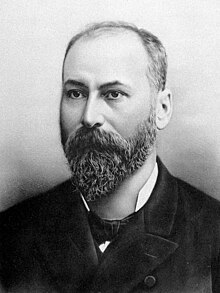|
Sigmund Exner
Sigmund Exner (also Sigmund Exner, Siegmund Exner-Ewarten, Siegmund Exner Ritter von Ewarten; 5 April 1846 – 5 February 1926) was an Austrian physiologist born in Vienna. Academic careerHe studied in Vienna under Ernst Wilhelm von Brücke (1819–1892), and in Heidelberg with Hermann von Helmholtz (1821–1894). In 1870 he received his degree, subsequently working as an assistant in the physiological institute at the University of Vienna. In 1891 he succeeded Ernst von Brücke as professor of physiology and director of the physiological institute. During his career, he received honorary doctorates from the Universities of Leipzig and Athens. Physiological researchSigmund Exner is known for his work in comparative physiology, and his studies of perception psychology from a physiological standpoint. He conducted important research on localization of behavioral functionality in the brain, in particular studies on the functional architecture of the visual cortex. He performed investigations of color contrast, hue adaptation, apparent motion and on the sensitivity of retinal regeneration.[1][2] He explained how the compound eye functions, and in 1891, published "Die Physiologie der facettierten Augen von Krebsen und Insekten", describing the compound eye physiology of insects and crustaceans. In 1899, Exner co-founded the Phonogrammarchiv in Vienna, an archive for recording acoustic phenomena for scientific purposes. Family He was the son of philosopher Franz-Serafin Exner (1802–1853), and had three renowned brothers; law professor Adolf Exner (1841–1894), physicist Karl Exner (1842–1914) and physicist Franz Exner (1849–1926). His sister, Marie, was married to urologist Anton von Frisch (1849–1917). Associated terms
Written works
References
External links |
||||||||||||||||
